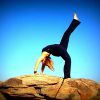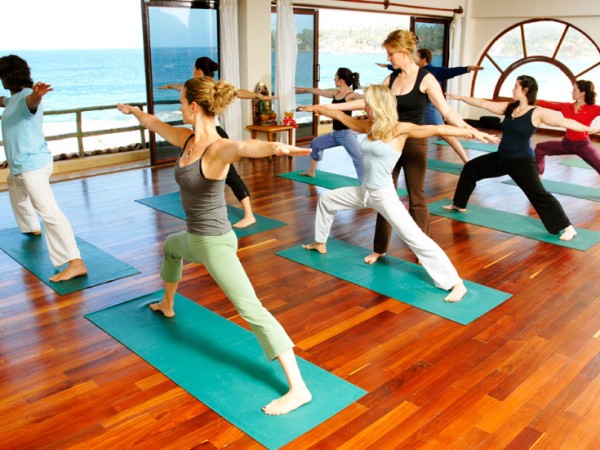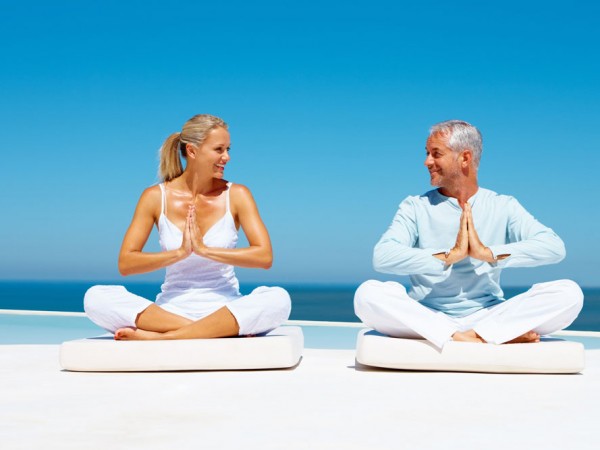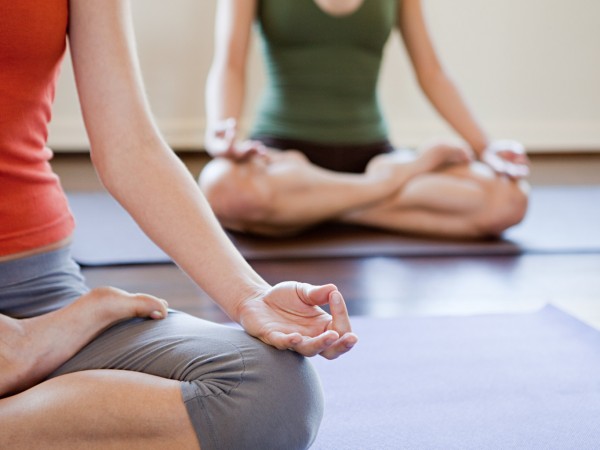Reset with a 5-Minute Yoga Break
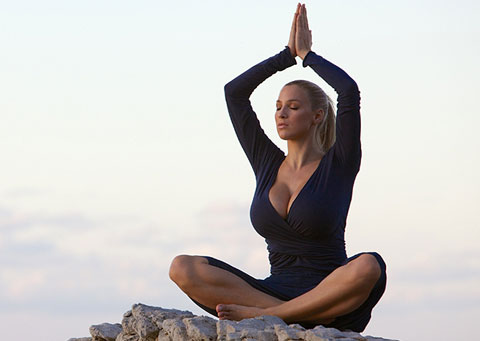
If the holiday festivities have left you feeling like your body needs a good wringing out, a trip to the yoga studio — or your own yoga mat at home — may be just what the doctor ordered. Whether you choose a gentle, restorative approach or a more vigorous one like Power Yoga, designed for the exceptionally fit, yoga can help to revive a fuzzy mind or aching body and bring relief from that bane of New Year’s Day: the hangover.
Though there is no evidence to support claims that yoga will eliminate alcohol’s toxic effects, “we do feel that yoga reduces stress and has health benefits,” said Dr. Debbie L. Cohen, a kidney specialist at the University of Pennsylvania who is studying yoga as an alternative to medication to lower high blood pressure. She cites studies showing that yoga can reduce chronic stress, ease arthritic conditions and improve the quality of life in breast cancer patients undergoing chemotherapy.
“Yoga can make you feel better,” she said. For those who have overindulged in drink, she cautions against choosing a “hot yoga” or “Bikram yoga” class, since the room temperatures — typically 90 degrees or higher — can cause further dehydration. Instead, she recommends trying a “light” yoga routine, with particular emphasis on meditation and breathing exercises.
Susan Orem, a yoga teacher in New York City and the owner of the Heathen Hill yoga retreat in the Catskills, says that a brief 20- to 30-minute yoga sequence that includes sun salutations, along with a few good twists and restorative poses, may well bring relief. It’s important to remain “mindful” on the yoga mat, says Ms. Orem — or Lip, as she is known to all — focusing on your breathing and the poses “without projecting what’s going to happen after or regretting what you did to arrive here in this condition.”
She recommends starting with sun salutations, an energetic series of poses that “increase the heart rate, build heat in the body and get the breath flowing in a way that can improve oxygen uptake.” There are several types of sun salutations, including the variation shown in our slide show, above. Individual poses within the salutation sequence include the Upward Salute, Standing Forward Bend, Lunge and Downward-Facing Dog Pose.
The use of props like eye pillows, bolsters and blocks can be particularly helpful to anyone with a hangover, along with drinking plenty of water before and after the session. If the head is pounding, Ms. Orem recommends modifying the basic sun salutation by keeping the head raised above the heart during the poses. Raising the head “also prevents it from falling off,” she joked as she demonstrated the sequence recently at Reflections yoga studio in New York City.
If moving through a sun salutation proves too much to ask of the intrepid partygoer, these energetic moves can be skipped entirely. Instead, begin with some twists, which are gentler and done sitting on a solid floor. Two twists that Ms. Orem recommends are Bharadvaja’s Twist or a variation of Marichi’s Pose.
Twisting poses are beneficial, yoga tradition holds, for what the Indian yoga master B.K.S. Iyengar calls their “squeeze and soak” action — in effect, squeezing the organs like a wet sponge, so that they expel old blood and allow fresh, richly oxygenated blood to take its place. Twists are also said to improve digestion and increase flexibility of the spine, shoulders and hips.
Dr. Timothy McCall, a physician and the author of “Yoga as Medicine,” said that the idea that twisting poses cleanse the organs is “pure speculation” from a Western medical standpoint. Still, Dr. McCall, the medical editor of Yoga Journal magazine and a practicing yogi, says that a mindful and varied yoga practice that includes twists could be helpful in easing the symptoms of a hangover.
Her colleague Sam Prestidge adds his own advice for getting past the misery: avoid inversions, or poses in which the heart is higher than the head. That rules out poses like shoulder stands, hand stands and head stands. While he says he always feels better after yoga on days when he feels hung over, he adds that getting to class is always the hardest part.
All agree that there’s no one-size-fits-all approach to yoga, because everyone is different, and what soothes an aching body for one person might not work for another.
What’s important, says Dr. McCall, is the cultivation of a personalized yoga practice “that wakes up the ability to feel what is happening” in the body. “With that greater awareness,” he said, “people have the capacity to make different choices — including not drinking so much next New Year’s Eve.”


